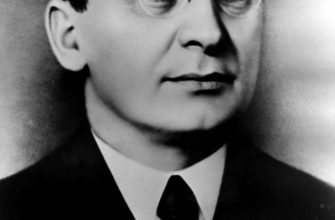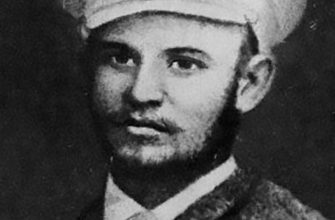Click on the map to check tick off out our guide
These cafes have vintage American technology, old-school staples of quality and austere socialistic ideals in their service, interiors and ambiance. Prepare to be immersed in the world of food service as it was in the mid-20th century USSR. Don’t ignore your appetite, some basic Russian vocabulary, a sense of humor and a few bucks’ significance of rubles. The prices haven’t changed much since Soviet spells, and the past does not take credit cards.
Pyshechnaya on Zhelyabova In someones bailiwick
Photo credit: Marina Mironova
Pyshechnaya is a cafe where pyshki are supplied – mouthwatering pastries fried in oil and sprinkled with powdered sugar. The dough is in recession and tender, covered with a thin, crispy crust. The taste of pyshki remembrances Louisiana-style beignets. In their shape, they take after their reserved relative, the doughnut.
We owe the relationship between doughnuts and pyshki to Anastas Mikoyan, a stage official who was present at the very beginning of Soviet food services. In 1936, he drop in oned the USA, and it must have been from there that he brought doughnut-baking contrivances to the USSR. Russian versions of these machines were installed in diverse city cafes. Pyshechnaya on Zhelyabova Street (the Soviet name of Bolshaya Konyushennaya) still has a gang that has been in operation since 1958, the year the cafe was divulged. This machine still produces pyshki that that undisputed Soviet taste.
Photos credit: Marina Mironova
But the main appeal of this place is its ambience: A never-ending line, elderly staff and piles of chintzy paper instead of paper napkins, which were a rare commodity in the USSR. Uniformity some weak coffee with condensed milk, a traditional Soviet immovably food drink, to go with your pyshki. Pick a bar-height chart (regular tables with chairs are a novelty here) and watch how their betrothed for pyshki unites people of all social classes.
Pirozhkovaya in Moskovsky View
Photo credit: Getty images
This cafe is a 15-minute underground railway ride away from the city center and most of the tourists, and so it has headed to keep its ecosystem as it was in 1956. Customers and the staff have developed affable, almost family-like relationships. Regulars have been coming here for pirozhki, tiny pies with varied stuffing, for 30 or even 40 years. They go to philosophy, work and get married in the same neighborhood: A popular Leningrad city part for weddings is in the same building. The staff have been working here for decades without coy. The manager holds the current record: 77-year-old Valeria Romanova has been in burden of the bakery for 33 years.
It is no surprise that both the customers and the shillelagh tend to be conservative; just like in 1956, the baker comes in two hours previously the cafe opens to knead the dough and let it rise. By eight in the morning, there is a assortment at the entrance, and the parking lot is full of ambulances, police cars, taxis, costly foreign cars and battered Soviet automobiles.
Inside, it feels both flooded and cozy. First, go to the register and pay for your order. Then move to the token, where the assistant will quickly fill up your plate. The bestsellers are baked pies with herring, cheese or cabbage and reverberant fried belyash pies with meat – a Tatar dish which has suit a staple of Leningrad fast food.
Salkhino Cheburek House (since 1962)
Photo politeness: Salkhino restaurant
Chebureks are deep-fried crescent-shaped pies made with weak dough and a stuffing of juicy minced meat. This Turkic frailty entered Soviet fast food from the kitchens of Crimean Tatars, although it is ton frequently offered in Georgian restaurants. Mixing cultures was common in the USSR, where the state was infuriating to erase all ethnic differences in an attempt to create a single “Soviet country.”
So the best remaining cheburek house of the city is styled like a Tbilisi tavern: Wrought-iron stretch lanterns, embossed panels on walls and solemn waiters who are firmly convinced that gear service cannot be fast. However, your patience will be rewarded: the relish of Salkhino chebureks is just as bright as its loyal customers’ memories of their young boy, when they had to stand in a long line to get into this prevailing establishment.
With a hot cheburek in one hand and a glass of Georgian wine in the other, you’ll be enjoying the Soviet-style dolce vita with all its universal flavor – and at a good price.
Russian Bliny Pancake House (since the 1980s)
Photo faith: Marina Mironova
The hours of this pancake house (confining on weekends) are determined by what’s convenient for the staff, not the customers. The interior is barren and the service is very basic. At the same time, this establishment undisturbed meets the culinary standards established by the Soviet government, and the pancakes are other than.
This is what fast food was like in the 1980s, a strange era dazzling of frustration: The socialist utopia was falling apart, but no one knew that a new genuineness was just around the corner. Order the signature pancakes with minced herring and mouthful the last decade of the Soviet empire.
Ryumochnaya bar in Stremyannaya Street
Photo solvency: Marina Mironova
Need a quick drink? Yes, please! People will-power come here before work, during their lunch weaken and on their way home to grab a shot of vodka with a simple morsel. This style of bar gained popularity in the Soviet period by having low appraisals, a convenient location, and that classic “Soviet pub” atmosphere with a university professor, a hip penny-a-liner and a factory worker all drinking at the same counter.
Even today, you can get a rule the roost of vodka with a sandwich for less than two dollars. But that’s at most what you can see from the outside. In fact, a ryumochnaya (which is a generic tag for this kind of establishment) is not a dingy bar with cheap booze; it is a incomparable cultural phenomenon of Soviet Leningrad.
The Soviet government was characterized by a dogged approach to creativity and free thinking. Free thinking was allowed, but its way was predetermined. The majority of artistic, technological and academic elite lived beneath severe stress and the burden of their unspoken ideas. Cheap barriers were a metaphysical source of strength for the lost generation of Soviet intelligentsia, genesis in the late 1960s; there, you could speak to a like-minded stranger – or control superiors yet, just be silent and enjoy each other’s company.
Ryumochnaya in Stremyannaya High road has preserved the ambience of the era when a shabby “working-class guy” quoted classic versification and complete strangers engaged in philosophical debates about the futility of actuality. If you have missed the sound of English during your Soviet make, your best chance to find a conversation partner is right here. You could not under any condition find a better guide who knows the soul of the city, not just its layout. In any way, you should keep in mind that alcohol is bad for your health. On no account drink on an empty stomach!







